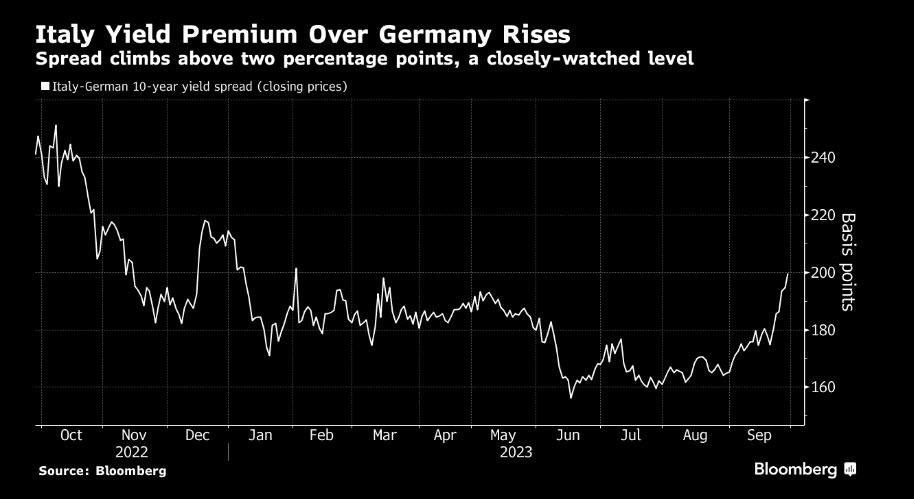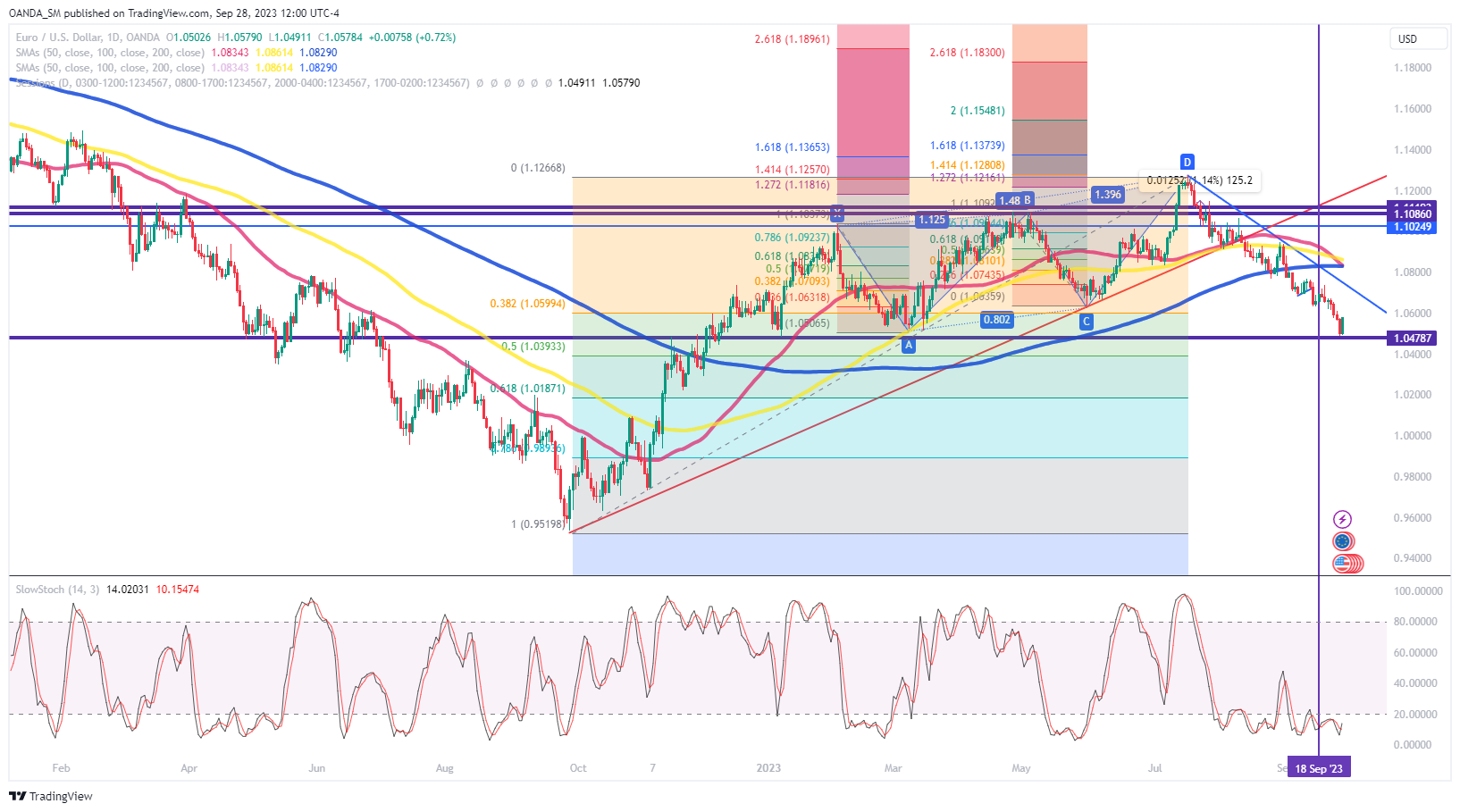- German HICP inflation declined sharply in September
- Italian-German 10-year yield spread tested 200 bps
- Dollar profit-taking begins after softer personal consumption data
The king dollar trade has run out of steam. It took cooling German inflation and a global bond market selloff to attract foreign investment back into Europe. The surge in European bond yields is actually bad news for the economy but should still provide some short-term relief for the euro.
Italian Debt Fears
The 10-year Treasury yield is higher by 5.4 bps to 4.661%, but that is taking a backseat to what is happening in Europe. The release of the Italian 2024 budget resurfaced fears that Italy might not struggle to pay back its debt. It came as no surprise that the government cut their growth target for this year but is makes markets nervous is that they significantly boosted their budget deficit targets. Italy is second to Greece when it comes to European debt and their budget deficit to GDP target just went from 3.7% to 4.3%. Debt worries are back as the Italian 10-year bond spread against Germany (BTP/Bund spread) surged to 200bps.
US Consumer Spending Data Supported Dollar Profit-Taking
US applications for unemployment benefits rose 2,000 to 204,000 for the week ending September 23rd. The labor market surprisingly remains tight. Expectations were for a mini-surge in claims as some shutdowns stemmed from the UAW strike, but that clearly didn’t happen. The US labor market remains tight as companies remain hesitant to lay off workers. With an unemployment rate of 3.8%, it seems a gradual increase from these relatively low historical levels will have to wait until the end of the year.
The checklist for risks to the US economy is not getting any smaller as the UAW strike appears like it might expand after the September 29th deadline. With a government shutdown potentially poised to start on Sunday, this might be the last jobless claims data we see in a while.
It turns out that the consumer might not have been as strong as we thought after the final reading of Q2 personal consumption was revised from 1.7% to 0.8%, the weakest level in over a year. Fed hawkishness however is not going away as the economy is cooling but is still likely to see 4% growth in Q3.
Euro has formed a key bottom ahead of the 1.0480 support level. Euro weakness has been exhausted and a short-term bounce could be supported towards the 1.06 region. If downward momentum returns, price action might target the 1.0410 level, which is the 50% retracement of the September 2022 low to the July high. To the upside, the 1.0720 level provides major resistance.



